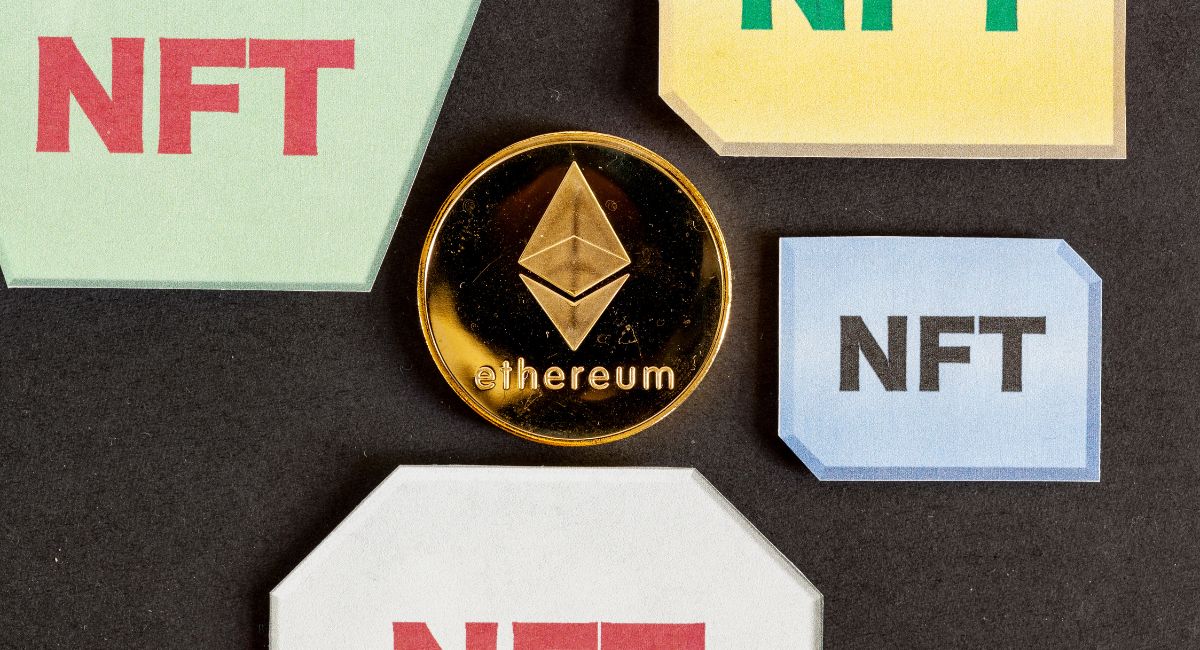What Do You Understand By The Term ” Wrapped Tokens,” Is It Useful?

Wrapped tokens are a cryptographic asset that represents another underlying asset. It involves the process of pegging the value of the original asset to a token on a different blockchain. This is typically done to enable the use of the original asset on a different blockchain or within a decentralized ecosystem.
The process of wrapping involves locking the original asset in a smart contract on its native blockchain, and in return, an equivalent amount of wrapped tokens is minted on the destination blockchain. These wrapped tokens are essentially a representation of the original asset and can be freely traded and utilized within the ecosystem of the destination blockchain.
One common example is wrapped Bitcoin (WBTC), where Bitcoin is locked in a smart contract on the Bitcoin blockchain, and an equivalent amount of WBTC is issued on the Ethereum blockchain. This allows users to interact with Bitcoin on the Ethereum network, opening up possibilities for decentralized finance (DeFi) applications, decentralized exchanges, and other blockchain-based services.
Wrapped tokens facilitate interoperability between different blockchain networks, providing users with more flexibility and options for utilizing their assets across various decentralized platforms. It’s important to note that the wrapped token’s value is pegged to the original asset it represents, and there is a trust element involved in the custodianship of the locked assets and the issuance of the wrapped tokens.
How do wrapped tokens work?

Wrapped tokens operate through a process known as token wrapping, and the mechanism involves locking an asset on its native blockchain and issuing an equivalent representation on another blockchain. Here’s a detailed breakdown of how wrapped tokens work:
- Asset Locking:
- The process begins with a user who wants to move an asset from one blockchain to another. This could be driven by the desire to utilize the asset in a different blockchain ecosystem, take advantage of specific features or applications, or participate in decentralized finance (DeFi) activities.
- The user initiates the wrapping process by depositing the original asset into a smart contract on its native blockchain. This smart contract holds and secures the locked asset.
- Issuance of Wrapped Tokens:
- Once the original asset is locked in the smart contract, an equivalent amount of wrapped tokens is minted and issued on the target blockchain. These wrapped tokens are fungible and can be freely traded and transacted within the destination blockchain’s ecosystem.
- The issuance of wrapped tokens is typically managed by a set of rules encoded in a smart contract, ensuring a one-to-one pegging with the original asset. For example, if a user locks 1 Bitcoin, they receive 1 wrapped Bitcoin on the target blockchain.
- Custodianship and Trust:
- The custody of the locked assets is a critical aspect of wrapped tokens. Trust is placed in the entity or consortium responsible for managing the smart contract on the native blockchain and ensuring the proper issuance and burning of wrapped tokens.
- This custodian is often a centralized entity or a consortium of entities responsible for maintaining transparency, security, and the one-to-one pegging of the wrapped tokens to the locked assets. Users need confidence that the wrapped tokens can be redeemed for the original assets at any time.
- Utilization on Target Blockchain:
- Once issued, wrapped tokens can be freely transferred and utilized on the target blockchain. Users can engage in decentralized exchanges, lend their assets in DeFi protocols, participate in yield farming, or leverage other blockchain-based services.
- Redemption and Unwrapping:
- If a user decides to move the assets back to the original blockchain, they can initiate the unwrapping process. This involves sending the wrapped tokens to the smart contract on the target blockchain, and in return, the equivalent amount of the original asset is released from the smart contract on its native blockchain.
Wrapped tokens provide interoperability between different blockchain networks, allowing users to access and use assets across various decentralized platforms while maintaining a link to the value of the original asset. The success of wrapped tokens relies on the trustworthiness and reliability of the custodian managing the wrapping process.
Also, read – Circulating, Maximum, And Total Quantity Of Crypto Tokens Described
Types of wrapped tokens

There are various types of wrapped tokens, each designed to represent different underlying assets on alternative blockchain networks. These wrapped tokens facilitate cross-chain interoperability and enable users to leverage their assets in different decentralized ecosystems. Here are some common types of wrapped tokens:
- Wrapped Bitcoin (WBTC):
- WBTC is one of the most well-known examples. It represents Bitcoin on the Ethereum blockchain. Users can lock their Bitcoin in a smart contract on the Bitcoin blockchain, and in return, they receive an equivalent amount of WBTC on the Ethereum blockchain. This allows Bitcoin holders to participate in Ethereum-based decentralized applications (DApps) and DeFi platforms.
- Wrapped Ether (WETH):
- WETH is Ethereum wrapped as an ERC-20 token. It’s commonly used in decentralized exchanges and DeFi applications on the Ethereum network. Users can wrap their native ETH into WETH, making it compatible with ERC-20 standards for seamless trading and interaction with various Ethereum-based smart contracts.
- Wrapped Stablecoins:
- Many stablecoins, such as USDC (USD Coin) or USDT (Tether), have wrapped versions on other blockchains. For example, there are versions of USDC and USDT on the Binance Smart Chain (BSC) and other networks. These wrapped stablecoins enable users to transact in familiar fiat-pegged assets across different blockchain ecosystems.
- Wrapped Gold and Precious Metals:
- Some blockchain projects offer wrapped tokens representing precious metals like gold. These tokens are typically pegged to the value of the corresponding precious metal, providing a digital representation of physical assets on the blockchain.
- Wrapped Fiat Currencies:
- Similar to stablecoins, there are wrapped tokens representing fiat currencies like the US Dollar (e.g., wUSD). These tokens enable users to interact with blockchain-based applications using traditional fiat currency values.
- Wrapped Stocks and Equities:
- Emerging platforms are exploring the creation of wrapped tokens representing traditional financial instruments such as stocks and equities. These tokens aim to bridge the gap between traditional financial markets and blockchain ecosystems, allowing users to trade and invest in traditional assets on decentralized platforms.
- Wrapped Synthetic Assets:
- Synthetic assets represent the value of an underlying asset without direct ownership of that asset. Wrapped synthetic assets can provide exposure to a wide range of assets, including commodities, indices, or even cryptocurrencies, without the need for direct ownership.
- Cross-Chain Wrapped Tokens:
- Some wrapped tokens are designed to move seamlessly between different blockchains. For instance, there are projects working on wrapped tokens that can be transferred between Ethereum and Binance Smart Chain.
The creation of wrapped tokens is driven by the desire to expand the utility of assets across various blockchain ecosystems. Each type of wrapped token serves a specific purpose, enabling users to unlock liquidity, engage in decentralized finance, and participate in diverse blockchain applications across different networks. It’s important to note that the success of wrapped tokens depends on the trustworthiness of the custodian and the stability of the pegging mechanism.
As liquidity is moving across the bridge from @beamprivacy to the $wBEAM token on #Ethereum, it seems that #DEX pairs are not too far away. https://t.co/O4PkqXqCyg
— Beam CTO | beamcto.beam | #PrivacyIsNormal (@BeamCTO) December 4, 2023
What are the benefits of wrapped tokens?

Wrapped tokens offer several benefits, contributing to the growth and development of decentralized finance (DeFi) ecosystems and providing users with increased flexibility and opportunities. Here are some key benefits of wrapped tokens:
- Interoperability:
- One of the primary advantages of wrapped tokens is their ability to enable interoperability between different blockchain networks. Users can bring assets from one blockchain to another, allowing them to participate in various decentralized applications, decentralized exchanges, and financial services across multiple ecosystems.
- Access to Decentralized Finance (DeFi):
- Wrapped tokens unlock the potential for users to participate in DeFi platforms and services. By representing assets from one blockchain on another, users can leverage their holdings in lending protocols, yield farming, decentralized exchanges, and other DeFi applications that may be exclusive to a specific blockchain.
- Cross-Chain Liquidity:
- Wrapped tokens contribute to the creation of cross-chain liquidity, allowing users to trade and transact assets seamlessly between different blockchains. This liquidity can enhance the efficiency of decentralized exchanges, providing users with more trading pairs and opportunities.
- Expanded Use Cases:
- Wrapped tokens broaden the use cases for various assets. For example, wrapped Bitcoin (WBTC) on the Ethereum blockchain enables Bitcoin holders to utilize their holdings in Ethereum-based smart contracts and applications, opening up a range of possibilities beyond simple holding or trading.
- Integration with Decentralized Exchanges (DEXs):
- Wrapped tokens are often integrated into decentralized exchanges, making it easier for users to trade and swap assets without leaving the decentralized ecosystem. This integration enhances the liquidity and usability of decentralized exchanges.
- Stablecoin Portability:
- Wrapped stablecoins allow users to use familiar fiat-pegged assets on different blockchains. This portability of stable value can be advantageous for users who want to engage in DeFi activities or transfer assets between different blockchain networks.
- Access to Different Ecosystems:
- Users can access and engage with different blockchain ecosystems without the need to convert their assets back and forth. This is particularly useful for individuals who want to explore various decentralized applications and services available on different blockchains.
- Collateralization in DeFi Protocols:
- Wrapped tokens, especially those representing stablecoins or other valuable assets, can be used as collateral in decentralized finance protocols. This collateralization allows users to borrow other assets or earn interest on their holdings.
- Bridge Between Traditional and Blockchain Finance:
- Some wrapped tokens represent traditional assets like gold or fiat currency, providing a bridge between traditional finance and blockchain-based systems. This can attract users from traditional financial markets to explore the benefits of blockchain technology.
- Enhanced Liquidity for Tokenized Assets:
- Assets that are tokenized and represented as wrapped tokens can benefit from increased liquidity. This is particularly relevant for assets that might have limited trading pairs on decentralized exchanges or face liquidity challenges.
While wrapped tokens offer these advantages, it’s important to note that they also introduce considerations such as trust in the custodian, proper pegging mechanisms, and potential regulatory implications. Users should carefully evaluate these factors before engaging with wrapped tokens.
What are the limitations of wrapped tokens?

Wrapped tokens, despite their benefits, come with certain limitations that users and developers should be aware of:
- Centralized Custodianship:
- Many wrapped tokens rely on a centralized custodian to manage the process of wrapping and unwrapping assets. This introduces a level of trust, as users must rely on the custodian to securely hold the original assets and ensure the proper issuance and burning of wrapped tokens. This centralization can be a point of vulnerability.
- Counterparty Risk:
- The reliance on a custodian introduces counterparty risk. If the custodian encounters issues such as insolvency, mismanagement, or fraud, it could impact the value and accessibility of the wrapped tokens. Users must trust that the custodian will act responsibly and maintain the integrity of the wrapped token system.
- Regulatory Uncertainty:
- The regulatory environment surrounding wrapped tokens is evolving, and there may be uncertainties regarding their legal status. Regulatory changes could impact the operation of wrapped token platforms, potentially leading to restrictions or compliance challenges.
- Smart Contract Risks:
- The smart contracts responsible for the wrapping and unwrapping processes are crucial components of wrapped token systems. Vulnerabilities or bugs in these smart contracts could lead to security breaches, resulting in the loss or manipulation of locked assets and wrapped tokens.
- Peg Stability:
- Maintaining a stable peg between the wrapped token and the original asset is essential. Market fluctuations, liquidity challenges, or discrepancies in pricing between different blockchains could lead to difficulties in maintaining this peg, impacting the value of the wrapped tokens.
- Limited Asset Range:
- While popular assets like Bitcoin and Ethereum have wrapped versions, not all assets are available in wrapped form. This limitation restricts the range of assets that users can move seamlessly between different blockchains.
- Dependency on Oracles:
- Some wrapped tokens rely on oracles to provide real-world price information for assets. Oracles introduce potential points of failure or manipulation, as inaccuracies in price feeds can impact the proper valuation of wrapped tokens.
- Complexity and User Education:
- The process of wrapping and unwrapping tokens can be complex for some users, especially those new to blockchain technology. Understanding the mechanisms, risks, and the role of custodians requires a certain level of education, which can be a barrier to entry for some individuals.
- Liquidity Challenges:
- Liquidity may be concentrated on specific blockchains or decentralized exchanges, leading to challenges in accessing liquidity for certain wrapped tokens. This can impact the efficiency of trading and other transactions involving these tokens.
Conclusion:
Wrapped tokens have emerged as valuable tools for promoting cross-chain interoperability and expanding the utility of assets within decentralized ecosystems. While they offer various benefits, including enhanced access to decentralized finance and increased liquidity, users must carefully consider the associated limitations and risks. As the space continues to evolve, addressing these challenges through improved security practices, decentralized custodianship models, and regulatory clarity will be crucial for the sustained growth and adoption of wrapped tokens in the broader blockchain landscape. Users should exercise diligence, stay informed about potential risks, and assess the credibility of the custodians and smart contracts involved in wrapped token systems.
Related posts
Editor's Choice
- Generative Art NFTs: Top 10 Amazing Reasons Its A Marriage Of Creativity And Code
- Mastering Fear In Crypto Trading: Top 10 Amazing Tips To know In 2024
- DTX Exchange Overcomes Bearish ETH Sentiment as Fantom (FTM) and PEPE Crash
- Demystifying Intriguing Total Market Cap: Your Guide to Crypto Common Terms In 2024
- Top 10 Intriguing Reasons Gaming Is Embracing Crypto and In-Game Assets But Not Ditching Everything Else
Hottest Blockchain News Daily
Get our latest posts and announcements in your inbox.
[cn-social-icon attr_class=”social-share-side”]




























































